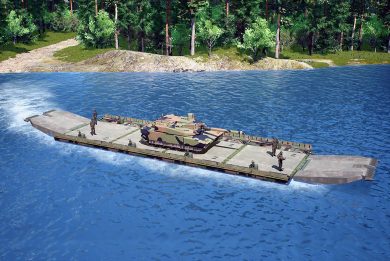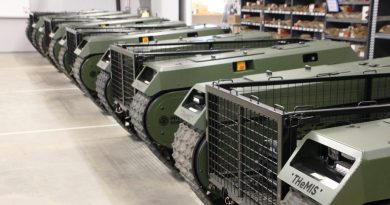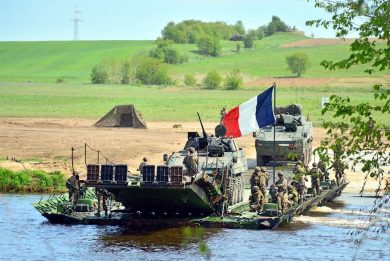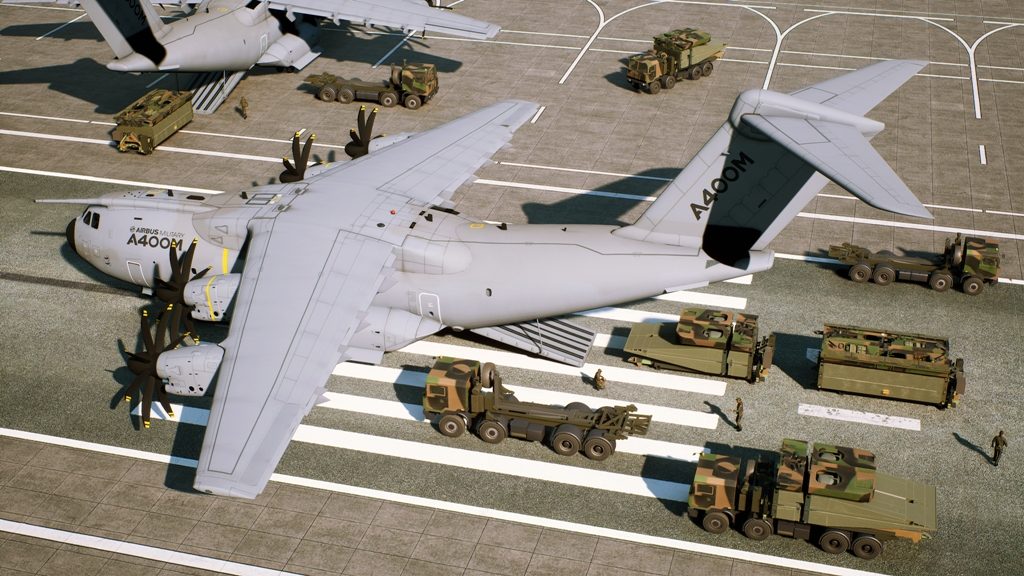
CNIM looks positively at the bridging business with its new PFM versions
Eurosatory should have marked the first appearance of the PFM F2 at an international exhibition, the Pont Flottant Motorisé (Motorised Floating Bridge) in its 2.0 version being currently under delivery for the French Army. “We started deliveries in early 2020,” Xavier Montazel, Director of the Defense & Maritime BU at CNIM tells EDR On-Line, “the Army intending to deploy in July an MLC40 ferry based on two trucks and two trailers carrying two 10-meter long floating elements and two short ramps. The system should start operations in late August in the African theatre of operation.” Apart from refurbishing the system replacing worn out elements as well as adopting new gasoline outboard motors, the F2 version includes the short ramps that allow sparing two trucks to deploy an MLC40, deployability being a key issue for the Armée de Terre, its troops in Africa finally getting a ferry that will provide much needed river crossing capabilities, that it was not possible to deploy with the original PFM due to the heavy logistic burden. Italy, another user of the PFM, might follow, CNIM having made a series of proposals with different levels of upgrade.
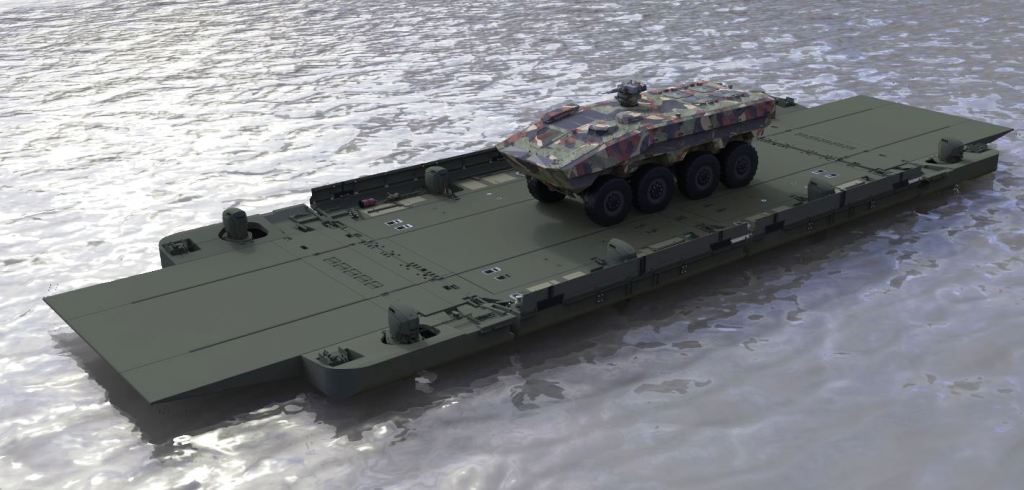
“Looking at the market CNIM understood that MLC70 tracked was not sufficient nowadays to provide river crossing capabilities to armoured formations, MBTs having definitely increased their GVW. Hence our decision to develop the F3 version, a wholly new design which module maintains the same weight but can withstand heavier loads,” Xavier Montazel explains. Floating modules are currently in the last phase of development, a first prototype being awaited for late 2020. These will be capable to cope with MLC85 tracked and MLC100 wheeled loads, modules of different length being designed, the usual 10 meters long module, carried on a trailer, and a 6.7 meters long one, that can be carried on an 8×8 truck fitted i.e. with a DROP palletised loading system, a solution favoured by different potential customers, especially within NATO northern countries.
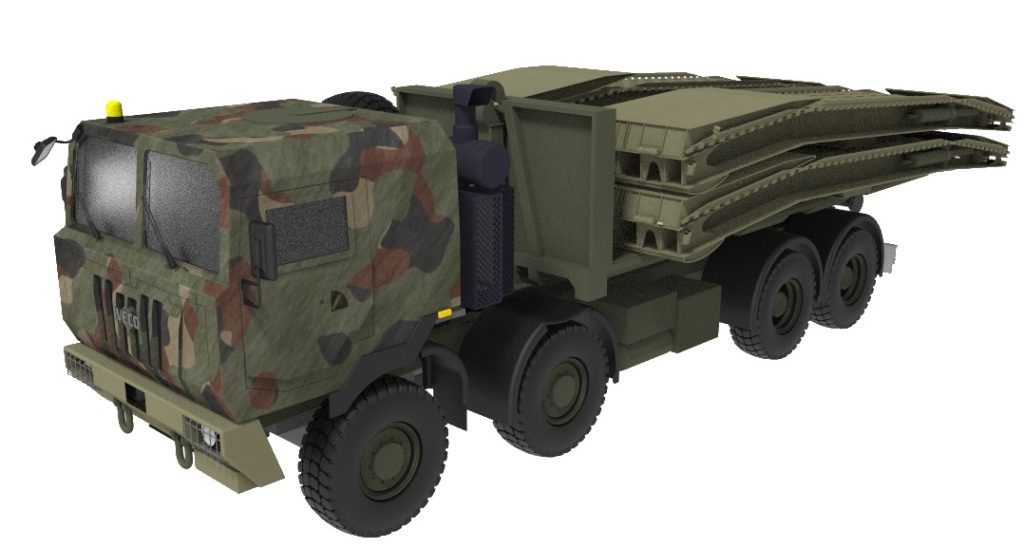
“We planned to build first a standard PFM F3 module, however due that two out of three of our potential customers are looking at the shorter version it will be the one that will first see the light before year end, this version being known as the F3XP,” Montazel says. The difference being only in the length, most testing will be valid for both modules. When we spoke last time with CNIM the choice for the F3 series outboard motors was still pending. Now the decision has been made, and in order to cope with the single-fuel policy CNIM selected Mercury Racing OptiMax 3.0 litres V-6 diesel, developed for the US DoD, that provides 175 shp, a considerable increase over the 90 hp of the F2 gasoline engine, due to the greater payload that can be embarked on the ferry or on the bridge. While developing the new modules, CNIM is also designing the add-on buoyancy elements, also available in longer and shorter versions, that will allow the F3 and F3XP to withstand MLC100 tracked and MLC120 loads. The ramps of all F3 versions will be capable to cope with those loads, thus reducing the logistic footprint as they will be compatible with all the latest modules. To build an MLC40 ferry with F3XP modules, two 6.7 meters modules will be used as well as two “ramp sections”, the latter being a 6.7 meters module fitted with short ramp, four trucks being thus needed for transporting the ferry. We must not forget to mention the interoperability issue: all F3 modules can be fitted with locking systems compatible with the Improved Ribbon Bridge.
The overall F3 programme has been slightly moved to the right, partly also due to the COVID pandemic. “We maintain our roadmap, with the F3 and F3XP coming first, followed by the F3MAX, the last element of the family being the F3D unmanned system, fitted with navigation and automatic locking systems allowing to build a bridge without any soldier on board,” Xavier Montazel concludes.
Images courtesy CNIM

